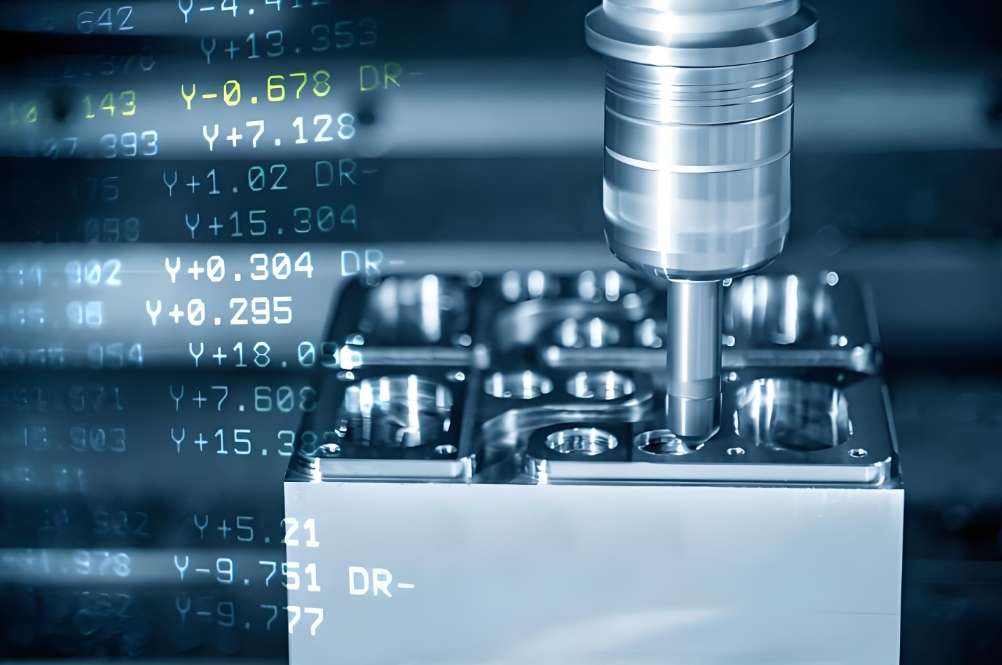
In the modern field of precision manufacturing, the roar of machine tools is not random noise; behind it lies a continuous flow of vast amounts of production data. Every precision component machined by CNC, from the moment the cutting tool first engages the workpiece to the final confirmation of dimensions, is accompanied by the real-time generation of multidimensional parameters such as temperature, vibration, power, and deformation. These data are not dormant records but rather an untapped goldmine for decision-making. How to transform these seemingly cold numbers into wisdom for optimizing machining processes has become the hidden battlefield determining the core competitiveness of manufacturing enterprises.
Traditional CNC machining relies on the experience of engineers and preset parameters. Faced with fluctuations in material properties, the gradual effects of tool wear, and invisible disturbances from environmental factors, this mode often suffers from lag and uncertainty. In contrast, a data-driven decision-making system constructs a dynamic response nervous system. Its core lies in establishing a production data collection network that covers the entire process: subtle fluctuations in spindle load current reveal the true state of tool edge wear; abnormal harmonics in the vibration spectrum of the worktable may indicate latent looseness in the fixture system; minor attenuation in coolant pressure might be associated with potential risks to workpiece surface integrity. These real-time signals, like the nerve endings of the workshop, continuously convey the deep pulse of the manufacturing process.
However, the value of raw production data can only be unleashed through in-depth refinement. The key is to build multidimensional analysis models: coupling real-time machining parameters with historical quality databases can precisely predict the optimal cutting parameter window for specific material batches; machine learning algorithms can parse the mapping relationship between tool vibration characteristics and remaining life, enabling a shift from scheduled tool changes to condition-driven ones; integrating equipment energy consumption production data with machining rhythm information can identify hidden lowlands of non-value-added energy consumption. For example, in the machining of an aerospace aluminum alloy structural component, by analyzing the data stream of workpiece thermal deformation under different cooling strategies, the team found that traditional continuous pouring actually induced local thermal stress distortion. Switching to a pulsating precision cooling scheme reduced the planarity error by 40%.
The true power of data-driven decision-making lies in forming a closed-loop system. When the online monitoring system detects a 3% abnormal increase in spindle torque, the system does not simply raise an alarm. Instead, it automatically matches two response strategies based on historical **production data** models: if it is judged to be minor tool chipping, it immediately compensates for the feed rate and reduces the remaining machining volume for the shift; if it is associated with abnormal material hardness, it dynamically calls up a backup finishing path. This real-time feedback and adaptive adjustment based on production data upgrades the passive control of the machining process to active optimization, significantly reducing trial-and-error costs and the bandwidth of quality fluctuations.
Achieving this vision requires breaking down data barriers. From embedded sensors in machine tools, external high-precision probes to workshop environmental monitoring units, building a comprehensive perception network is the foundation. The more critical challenge lies in the integration of heterogeneous production data —aligning temporal vibration signals, spatial positioning coordinates, and unstructured work order information in time and space, and reconstructing a holographic image of the machining process on a unified data platform. This requires a team proficient in both manufacturing process principles and data science tools to extract the true knowledge of process optimization from data noise.
We have been deeply involved in the field of precision metal machining, embedding the concept of data-driven manufacturing into the DNA of CNC production. From suppressing chatter in high-speed milling to predicting dimensions in micron-level turning, our engineering team continues to uncover optimization codes in the flow of **production data**, building a complete capability chain from data collection, intelligent analysis to dynamic decision-making. Explore how data can reshape the logic of precision manufacturing:www.simituo.com.